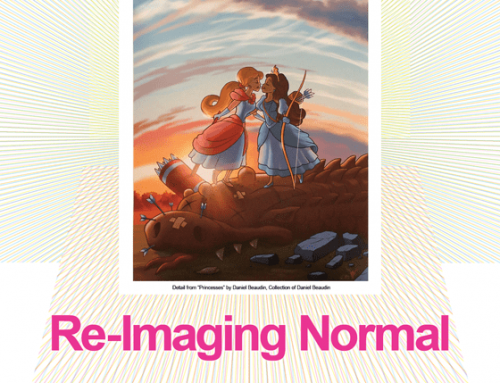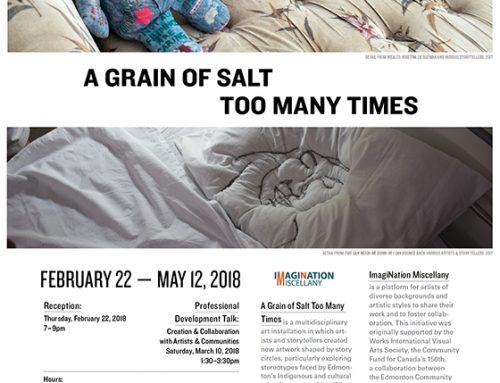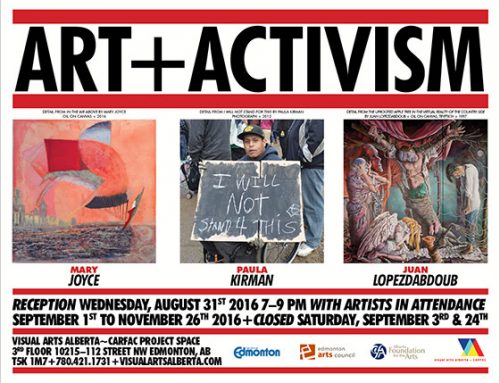X position
symbol: 1. an object standing for or representing something else; an emblem
(The New Webster Handy College Dictionary, pg. 526)
‘Tis an old saying, the Devil lurks behind the Cross.
Miquel de Cervantes (1547-1616)
Father Douglas
Sola Dei Gloria, 2011
Egg tempera, gold leaf on wooden cross
Courtesy of the artist
A cross is a very simple geometrical figure consisting of two lines perpendicular to each other and dividing one or two of the lines in half (http://en.wikipedia.org/wiki/Cross). Cross shaped signs are one of the most ancient of human symbols, dating back to the earliest stages of human cultural development. While the exact meaning of these early signs is unknown, it is supposed that the cross was used for its formal and ornamental value, and may also have possessed religious significance. During the European Bronze Age (1800-700 BC) the cross became a widely diffused symbol throughout Europe. By the second century AD it had become the most potent and widely disseminated symbol of the Christian religion, reminding Christians of God’s act of love in Christ’s sacrifice at Calvary and, through his death on the cross and subsequent resurrection, his triumph over sin and death. Throughout the centuries the cross has also served many other uses, including functioning as a personal signature, as a grammatical marking device, as a vehicular sign, and as a sign of danger.
The exhibition X position, presented by the Visual Arts Alberta Association (VAAA), explores ideas
concerning the use of symbols and how artists re-interpret symbols in contemporary times,
especially the politically and socially loaded symbols pertaining to Christianity and the Church.
For most of Euro-Anglo American art history the use of the cross in the visual arts has been associated with Christian religious imagery. While this remains the predominant use of this symbol, modern art and culture have also seen the rise of images of the cross and crucifixion being used to make statements unconnected with Christian iconography. Some artists have returned to the roots of this image, utilizing the cross form in purely formal or decorative ways. Others have used the symbolic meaning of the cross to ascribe other meanings to it, sometimes with very controversial results.
In 1989, for example, American artist Andreas Serrano’s photographic work Piss Christ, was denounced by some as blasphemous. While Serrano has said that the work is not intended to impugn religion but alludes to a perceived commercializing of Christian icons in contemporary culture, the display of the piece caused a furor. Serrano received numerous death threats and the work itself was vandalized when displayed at the National Gallery of Victoria, Australia. Much more recently another work has raised the ire of conservative organizations, most prominently the Catholic League of America. In December of 2010 the Smithsonian Institute, acceding to pressure from this group, removed a four minute segment of a video entitled A Fire in My Belly, produced in 1987 by New York artist David Wojnarowicz. The work, which contains a segment showing ants crawling over a bloodied crucifix, was created by the artist as a complex metaphor for AIDS. The Catholic League, however, deemed the work ‘anti-Christian’ and demanded its removal from the Smithsonian’s same-sex themed exhibition Hide/Seek.
As with the works discussed above, the art works in X position adhere to the questing, and sometimes confrontational, spirit of contemporary art and provide numerous interpretations of this ancient form. Many of the artists have chosen to interpret the cross with the iconography and meanings associated with Christianity. This is seen, for example, in the works of Father Douglas, Al Mier, Leona Clausen, Patty Vest and James Gaa. While their stylistic approaches vary from the Byzantine iconography of Father Douglas to the mixed media approach of Leona Clausen, these artists have viewed the cross as a Christian symbol with familiar associations. A second group of artists, on the other hand, have chosen to concentrate their efforts primarily on the design and formal qualities of the cross structure. This is seen in the works of Amy Loewan, Aaron Falkenberg, David Janzen, Allen Ball, and C.W. Carson. Both Carson and Falkenberg, for example, have depended on chance ‘discoveries’ and ‘straight’ photography to create their works. While symbolic meanings may underly these photographic images, such considerations are not readily apparent and the works are appreciated as designs and objects first. Ball and Loewan, meanwhile, have used a variety of media and materials to create intricate patterns which, while referencing the cross shape, can be appreciated on a purely formal level removed from any symbolic meaning. Finally, some artists have taken the symbolic power of the Christian cross and used it to either address ideas which comment upon or actually subvert Christian iconography, or which speak to concerns unrelated to Christianity. Crucifixa 1 by John Richardson and Incarnation by Blair Brennan, for example, while making Biblical references, provide a very 21st century interpretation of this source material. The works of Lee Bale and Shane Golby, meanwhile, use the cross as a symbol of worship or martyrdom to address ideas unrelated to Christianity itself. Lee Bale, for example, has described her colourful dragonfly cross as being concerned with western society’s worship of dollar store ‘flash and trash culture’.
Aaron Falkenberg
Window Frost, 2011
Photograph
Courtesy of the artist
Our world is inundated with symbols, all of which direct us on how to move, think and behave. One of the most ancient and powerful of these is the sign of the cross. The artists in the VAAA exhibition X position investigate this form in a variety of ways. Whatever the media, artistic style, or meaning explored by the various artists, however, the art works presented demonstrate the abiding presence of symbols in
society and the capability of the cross, in particular, to both inspire and provoke those confronted with it.
Shane Golby









